Cycling syncing: 4 simple habits that support my hormone health
Sharing the inside scoop on simple, doable micro-habits that support happy and healthy hormones based on my personal experiences to feel more energized and balanced throughout the month.
In this post, I’ll cover:
4 simple ways I support my hormone health
A review of the phases of a woman’s cycle
Part 1: Nourishing your body with foods
Part 2: Nourishing your body with movement
Part 3: Nourishing your body with micronutrients
Part 4: Nourishing your body with rhythms
Supporting a healthier you
More details on the launch of my cycle syncing guide!
Do you have those days where you’re full of energy, running 9 million miles an hour, checking everything off your to-do list, crushing it at the gym, and when you finally sit down at the end of the day, you exhale thinking ‘wow, today was a great day’?
But then just a few days later, you barely have the energy to get up in the morning and the idea of doing anything other than curling up on the couch in your cozy sweatpants seems like a daunting task?
It might seem frustrating to swing from one extreme to the other, but these shifts are tied to a natural and beautiful rhythm within us: our menstrual cycle. Learning how to align with that rhythm has changed everything for my health.
After reading In the Flo by Alissa Vitti in an effort to get my period back, I gained a better understanding of the phases of the menstrual cycle and how I can support my body to better manage the overall symptoms I experience. Since then, syncing with my cycle has given me more consistent periods, helped me manage my mood, brought balance to my energy levels, and decreased the drastic highs and lows in how I feel each day.
And now, I want to share everything I’ve learned - so you can live a healthier life, feel good in your body, and focus more on doing what you love.
If you haven’t read the details of my hormone health journey before adopting these new habits, you can read it here: What losing my period taught me about hormone health
DISCLAIMER: I want to emphasize this is not prescriptive and all of this is based on my own research and personal experiences. If you have personal questions, your doctor or OBGYN can be super helpful! Mine has helped me to better understand the value in having a regular menstrual cycle as a woman and what it means for my own health.
4 simple ways I support my hormone health
Nourishing food: Fueling with foods that provide the nutrients my body needs during each phase of the cycle.
Movement: Incorporating exercises that align with my energy levels and support what my body needs at different times.
Micronutrients: Using seed cycling to add key micronutrients that keep my body in sync with its natural hormonal rhythms.
Rhythms: Listening to my body and giving it more of what it needs so that it can show up well.
While it can be daunting to figure out what to do, when to do it, and how to keep up with it all, I’ve worked to make these micro-habits simple and doable - so they support my life instead of adding stress to it.
Don’t look at this as another to-do list, but instead pick one or two areas to begin with. Even making a small shift can have a meaningful difference in your hormonal health.
Hormones are constantly fluctuating and changing throughout the different weeks of the month, so it makes sense that we would need to shift and change to meet those needs. The four key areas that I focus on are food, movement, micronutrients, and rhythms.
A review of the phases of a woman’s cycle
Before we dive into the key micro-habits, let’s go through the four phases of a woman’s cycle. Much of what I’ve learned comes from Clue, which is a phase tracking app that offers a bunch of resources to help women better understand their health. Here is how Clue defines each phase1:
“The menstrual cycle starts on the first day of your period and ends the day before your next period begins.”
Our cycle plays a significant role in our overall health, impacting everything from energy levels to mood, and even productivity. As women, it is important we learn more about this system that is a part of us, so we can make more informed decisions when it comes to our health and show up as the best version of ourselves.
Clue goes much more into detail, but here is a high-level summary of the four main phases:
Menstruation - This is the time when your body is shedding the inner layer of the uterine wall, as there is no egg inside for it to keep safe. Your body is hard at work here, so rest and nourishment are extra important (day 1 - 5, according to Clue).
Follicular phase - This is the beginning, which starts when you are menstruating to when you begin ovulation. Your body is going through the processes to prepare an egg. Estrogen levels rise here, which provide an added boost of energy (day 5 - 15, according to Clue).
Ovulation - In the middle of the cycle, ovulation occurs which is a key event in the cycle where the egg is released into the fallopian tube. Continuation of high energy often occurs here as well (around day 14, according to Clue).
Luteal phase - This is the end, from ovulation to the start of the next period. During this time, our body responds based on whether or not we are pregnant. If we are not, that is when our body prepares for menstruation. Hormone levels drop here, which often lead to more symptoms like mood swings and fatigue (around day 16 - 30, according to Clue).
During these four phases, a woman’s hormones are constantly ebbing and flowing, which lead to a variety of physical and emotional experiences. Some you may be familiar with include changes in energy levels, mood swings, acne, bloating, and cramping.
As someone who likes to feel good in her body, I’ve spent time researching how to support myself during each phase to reduce the symptoms and feel more balanced. I leverage cycle syncing, and while I’m not a doctor, I’m sharing what’s helped me personally after learning and trying out this approach.
“Cycle syncing” is the practice of adjusting your diet and exercise to support the body during each phase.2
- Anna Gunther, Yale New Haven Health
Part 1: Nourishing your body with foods
While all foods have a place, certain ingredients contain nutrients that can better support your body depending on the phase you are in. In my experience, being intentional about what I eat in each phase has helped reduce symptoms, balance my energy, and help me feel good in my body.3
Menstruation
Warming foods can make your body feel cozy and supported during this phase. Soups with nutrient-rich foods such as kale and hearty greens can be valuable here. I tend to lead towards blackberries and blueberries, along with red meat in this phase. Salty foods such as coconut aminos and peanut butter are also something my body enjoys during this time.
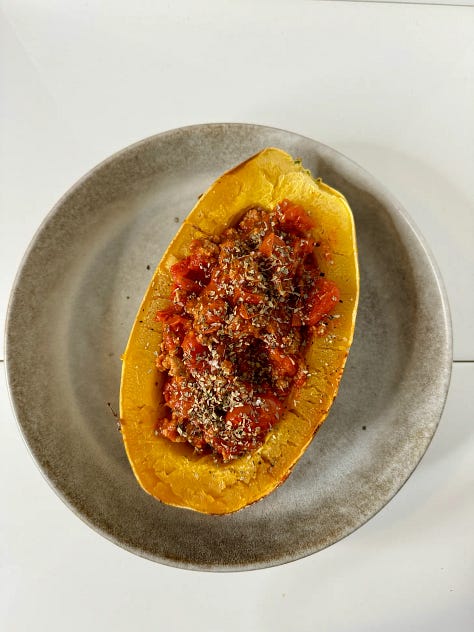
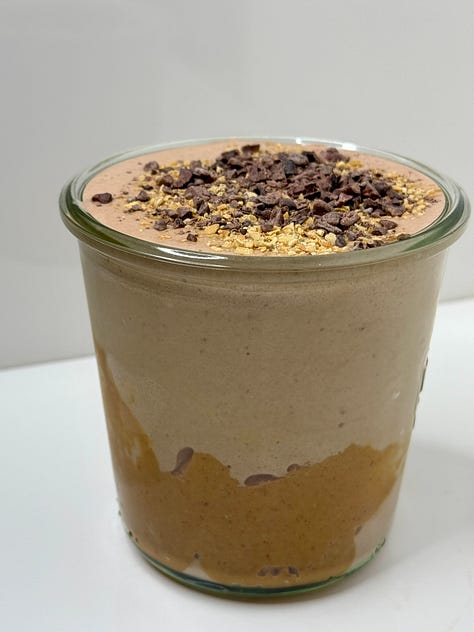
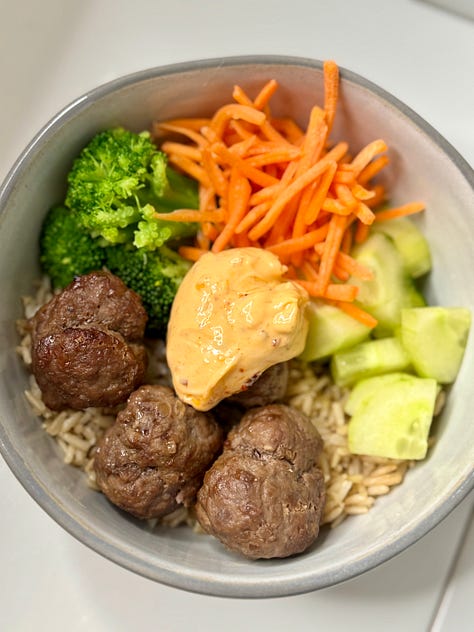
Nutrient-dense recipes during the menstruation phase:
Follicular
Light & bright foods are great during this time of the month! From lettuce and zucchini to limes and citrus, I often crave these lighter fares. For protein, I often lean towards eggs, shrimp, and chicken. Additionally, healthy fats like avocados and nut butter are staples for me during this time.

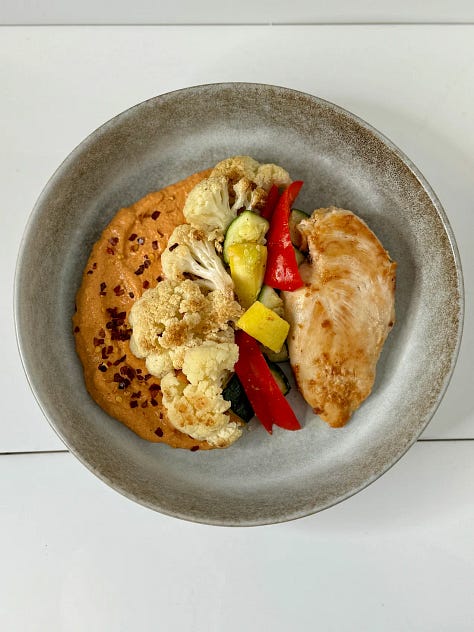

Energizing recipes for the follicular phase:
Ovulatory
More of a rich and summery vibe, I lean towards red bell peppers, spinach, and asparagus for veggies. Red fruits like strawberries and raspberries are a staple, as well as salmon, tuna, and lamb. Dark chocolate and pickled veggies are often a great addition here as well.
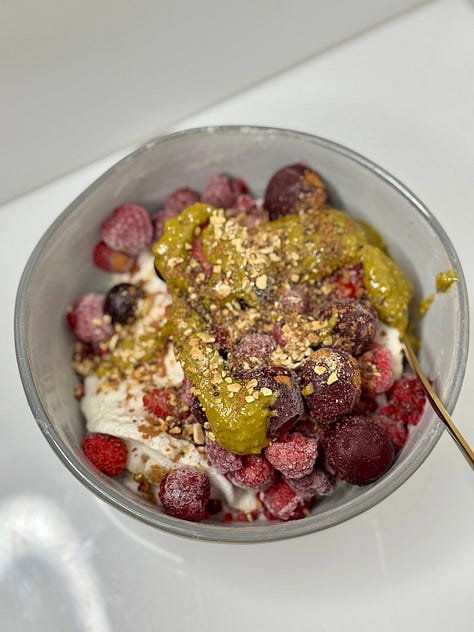
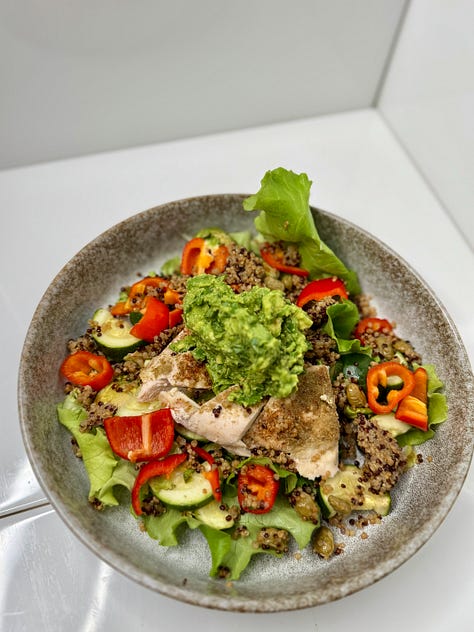

Delicious recipes during the ovulatory phase:
Luteal
As our bodies start to slow down and crave more energy, denser foods like apples and dates are inviting. Brown rice, turkey, salmon, and beef also support my body well during this phase. For veggies, I often lean towards carbohydrate-rich offerings like sweet potatoes, onions, and squash.
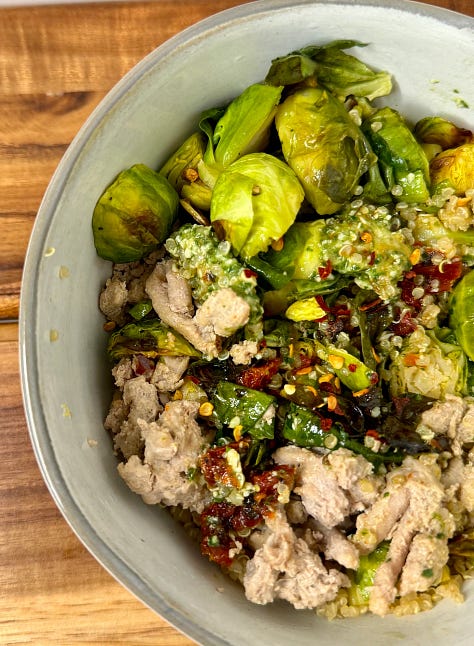
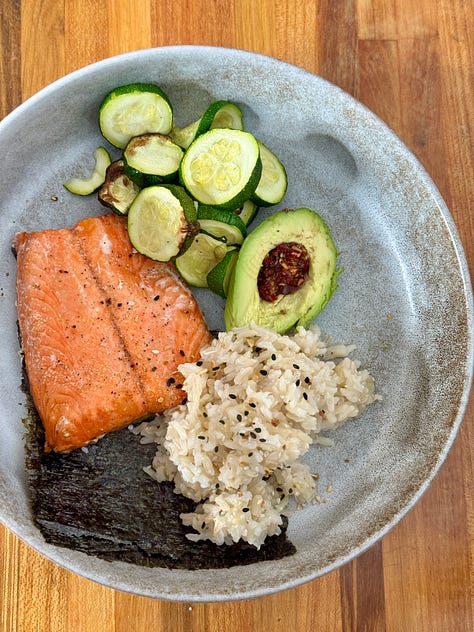
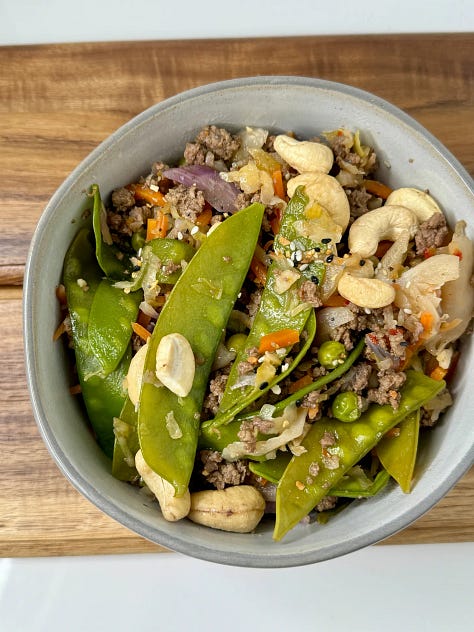
Recommendations for nourishing recipes during the luteal phase:
Part 2: Nourishing your body with movement
Movement is a powerful way to support your body and match your energy levels, so you can end each day without feeling completely depleted. In my experience, you can still move your body while supporting it well throughout the different phases.
Menstruation
Slowing down and listening to your body during this phase is super helpful. Since you may already be low on energy, you don’t want to push your body over the edge with intense exercise. Walking and yoga can feel especially restorative here.
Follicular
Waking up with more energy, you may enjoy cardio-based exercises from biking to rock climbing or jogging. This is a fun time to try out something new or different as well!
Ovulatory
At the peak of energy levels, heavy weight training and higher-intensity exercise fits well here. This is the time where you might feel your strongest and can usually lift heavier weights.
Luteal
Winding down while still having some energy, this time may be best leveraged for lighter strength training and pilates. It is vital that you listen to your body here to know how hard or how heavy you can go prior to heading into the menstruation phase.
Part 3: Nourishing your body with micronutrients
Seed cycling is one of the ways I have been able to maintain a more consistent period, keeping things on track and ensuring that I am getting the micronutrients I need during each of the phases. The month is split in half, with two types of seeds in the first half and two types of seeds in the second half.
Seed cycling, also known as seed rotation, helps rebalance hormones by promoting estrogen and progesterone production during particular times of your menstrual cycle when they would naturally rise.4
- Dr. Kim Hansen, MD
Follicular cycle: Includes menstruation/follicular/ovulatory
I eat 1 Tbsp pumpkin + 1 Tbsp flax seeds from day 1 - 14 of the full menstrual cycle. According to Hansen, ‘the flax and pumpkin seeds promote estrogen during the first half of your menstrual cycle’.5
Luteal cycle
I have 1 Tbsp sunflower + 1 Tbsp sesame seeds from day 15 - 28 of the full menstrual cycle. In her article, Hansen mentions that ‘after ovulation, the body starts to produce progesterone…this is when you switch to daily sunflower and sesame seed intake to promote progesterone production.’ 6
Pro tip: I have linked where you can order seeds online, but they are often found near the spices at your local grocery store. Trader Joe’s also offers affordable options in smaller batches.
To make it easier on myself, I grind up a whole batch of each of the raw and unsalted seeds at the beginning of the month and store them in sealed mason jars. Then, every single day, I top my breakfast or lunch with the seeds that support me according to my phase. They are great to enjoy on top of a smoothie or yogurt bowl, or a salad or soup.
At first, it can be difficult to keep up with, but I have found that adding them to my calendar on the refrigerator has helped. (I use this one to write our weekly menu and any little reminders throughout the week)
Part 4: Nourishing your body with your rhythms
The rhythms of our cycle can often be compared to the seasons in a year. Just how there are long days and lots of vibrant life, there are other seasons that are slow, intentional, and restful.
Menstruation (compared to Winter)
A phase where it feels nice to be cozied up and energy is low. Drawn to slowing down and spending time alone, meet yourself where you are at. Listening to your body and providing it with the rest it needs can support your overall health.
Follicular (compared to Spring)
Just as Spring brings about new life and more energy, you may notice much more energy in this phase. This added energy often leads to more creative ideas and interest in more movement or starting something new.
Ovulatory (compared to Summer)
At the height of energy, you may experience wanting to spend lots of time around your people, feeling confident and social. Big tasks and achievements often occur during this time as well. At the height of energy, spending lots of time with people can be very rejuvenating and support your mental health.
Luteal (compared to Fall)
Slowing back down in preparation for menstruation, you may feel some lingering energy but not as much as earlier in your cycle. Beginning to wind down, wrapping up projects, and getting organized can feel good during this phase.
The cycles are absolutely beautiful and each one has its purposes. As someone who has struggled to maintain a consistent period over the years, cycle syncing has been transformative, helping me to support my body and promote good hormone health.
Supporting a healthier you
Take a few minutes each day to check in with your own body and see what it is craving. I bet your body is telling you what it needs, whether you are listening or not. I hope my research and personal experiences help you on your journey to a healthier life. Remember, the best thing you can do for your health is to check in and listen to your body. It’s the only one you have, so it’s important you treat it well.
Before you go, I want to hear from you in the comments. What are you doing to support your hormone health and do you recommend it?
Best,
Grace Barker
Nourish your body and support healthy hormones: A cycle syncing ingredient guide
The impact nourishing foods have on health
If you want to learn more about health and how you can support your body, these are some strong women writers that I enjoy reading:
, , , , .
https://helloclue.com/articles/cycle-a-z/the-menstrual-cycle-more-than-just-the-period
https://www.ynhhs.org/articles/what-is-cycle-syncing
Please note that the information provided here is for general knowledge only and should not be considered as personalized nutrition advice. I am not a registered dietitian and cannot provide medical or dietary guidance for specific health conditions. Always consult with a qualified healthcare professional before making any significant changes to your diet.*
https://www.nfmhealth.com/seed-cycling-using-food-medicine-balance-hormones/#:~:text=You%20start%20by%20eating%20ground,%2Dalpha%2Dhydroxyestrone%20estrogen%20metabolites.
https://www.nfmhealth.com/seed-cycling-using-food-medicine-balance-hormones/#:~:text=You%20start%20by%20eating%20ground,%2Dalpha%2Dhydroxyestrone%20estrogen%20metabolites.
https://www.nfmhealth.com/seed-cycling-using-food-medicine-balance-hormones/#:~:text=You%20start%20by%20eating%20ground,%2Dalpha%2Dhydroxyestrone%20estrogen%20metabolites.






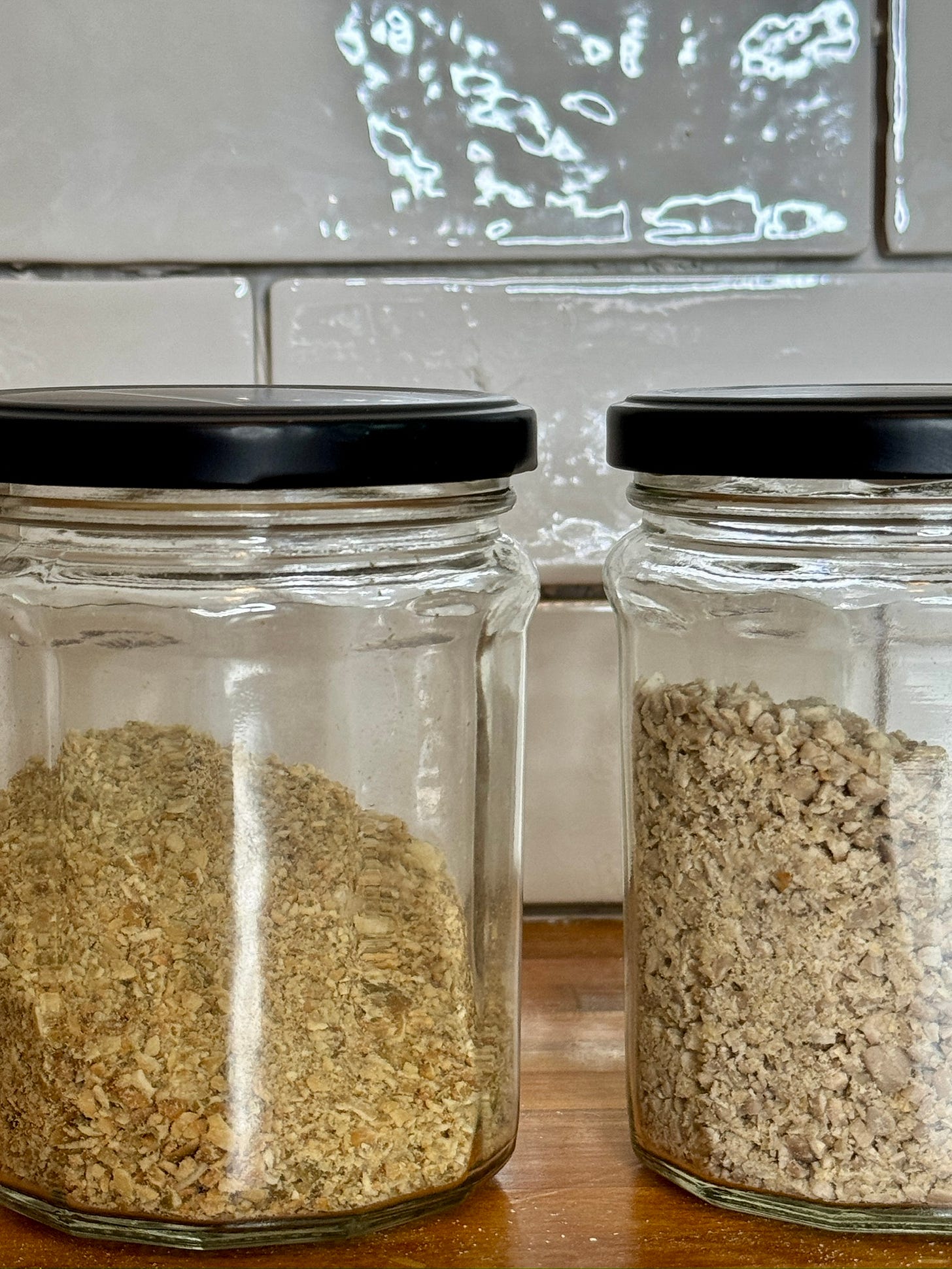


Thank you for the shout-out, Grace 🫶🏻 SO happy to be a part of this supportive space and community!